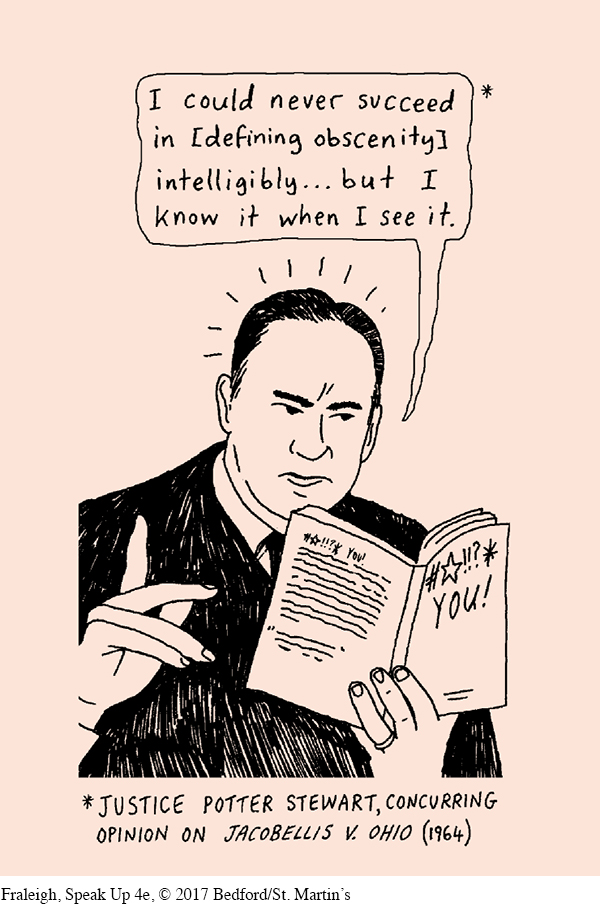Definition
Through definition, you break down something by its parts and explain how they add up to identify the topic. In short, you explain the essence, meaning, purpose, or identity of something. That “something” could be any of the following:
An object—
for example, “What is a bicycle derailleur?” A person or group—
for instance, “What are hipsters?” An event—
such as, “What was ‘the Play’ in college football?” A process—
for instance, “What is reverse engineering?” An idea or concept—
for example, “What is obscenity?”
As we discuss in Chapter 8, there are four types of definitions. An example of each is shown in the table on page 469, which demonstrates how you might use each of the four types to define the word obscenity.
Page 469
TYPES OF DEFINITIONS
| Type | Explanation | Example |
|---|---|---|
| Dictionary | The meaning of a term as it appears in a dictionary | Merriam- |
| Expert | The meaning of a term that comes from a person or an organization that is a credible source of information on your speech’s topic | According to Chief Justice Warren Burger of the U.S. Supreme Court in the 1973 case Miller v. California, obscenity is expression that appeals to a “prurient” (sick or unhealthy) interest in sex or sexual matters; depicts sexual conduct in a “patently offensive way”; and, when taken as a whole, “lacks serious literary, artistic, political, or scientific value.” |
| Etymological | The understanding of a word or concept that is obtained by tracing its roots in the same or other languages | The word obscenity may derive from the Latin word obscaenus, combining the prefix ob (meaning “to”) and the word caenum (meaning “dirt,” “filth,” “mire,” and “excrement”). |
| Functional | The meaning of a term that comes from examining how it is applied or how it functions | In practice, American law recognizes obscenity as hard- |
Page 470
